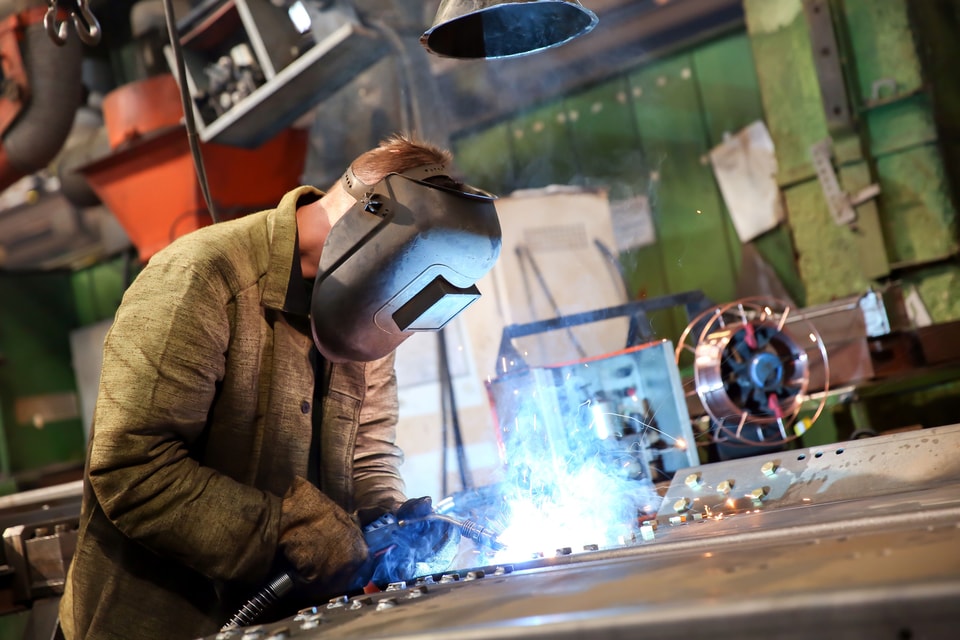Third Way Take Published February 29, 2016 · Updated February 29, 2016 · 4 minute read
Three Reasons Why TPP Is Good for Manufacturing
Jay Chittooran

Leo Gerard, the president of the United Steelworkers, said recently that the Trans-Pacific Partnership (TPP) would deliver the “final death blow to American manufacturing”. Aside from the fact that the National Association of Manufacturers has backed the deal, analysis of trade deals tells a very different story for manufacturing. Simply put: modern trade deals work. They have increased opportunities for American manufacturers, promoted middle-class prosperity, and supported American workers.
First, if you look back at all the U.S. free trade agreements (FTAs) that went into effect since the turn of the century—with 17 countries in all since 2000—the U.S. trade balance has improved in 13 countries. That means we now manufacture and ship more stuff to those trading partners than we bring in. In fact, the United States went from a $2.8 billion trade deficit with these 17 countries to a $30.9 billion surplus. And that’s because after implementing a free trade deal, we boosted Made in the USA goods at double the rate of imports (52% vs. 26%). Looking at the year before FTA implementation to 2014, the average export growth rate across these modern FTAs is a whopping 138%. These improvements all benefit American manufacturers.
Second, TPP cuts tariffs on American manufactured goods so our manufacturing sector can better compete in global markets. According to the World Economic Forum, U.S. manufacturers face some of the steepest trade barriers in the world. Of the 138 countries examined, the United States ranks 130th in terms of fewest barriers. That mean that 129 countries face fewer trade barriers than American manufacturers. The United States barely edges out countries like Bhutan and Liberia. Meanwhile, Mexico faces the 28th fewest barriers, and China faces the 58th fewest. And other TPP countries face fairly low tariffs: New Zealand, 23rd fewest; Peru, 11th fewest; Singapore, 5th fewest; and Vietnam, 9th fewest. But not the United States.
And when we play with a stacked deck, U.S. manufacturers lose. Since 1996, the share of U.S. manufactured goods exports to the five TPP countries with which we don’t have an FTA (Brunei, Japan, Malaysia, New Zealand, and Vietnam) has fallen by over 60%. Meanwhile, China has more than picked up the slack and has increased its exports share to this group of countries by over 135%. China has done this by signing new trade deals and trading more within the region.
The status quo is not acceptable. TPP will ensure that U.S. producers are able to compete. And that’s because our trade deals work. In fact, with the six TPP countries with whom the United States has an FTA, we run an overall manufacturing trade surplus, while we have a deficit with the five TPP countries with whom we don’t have an FTA.
Third, TPP ensures that manufacturing workers will have fully enforceable, high-standard labor protections. In fact, it has the highest labor standards for any trade deal ever. Building off deals from earlier this century, TPP has stronger labor rights, better enforcement, and stiffer penalties for violators, which include stopping trade benefits. And, notably, TPP upgrades the labor provisions with six countries (Australia, Canada, Chile, Mexico, Peru, and Singapore) with which the United States already has FTAs. Now, all TPP countries will be on the same playing field with protections for acceptable work conditions and the right to unionize, and it also bars employment discrimination and exploitative labor, including child labor.
By 2030, about 2/3 of the world’s middle class will live in Asia. The question is what goods and services will they buy. If we can seize those markets and ensure that American products are competitive, the U.S. manufacturing sector could see vast new opportunities. TPP is the way to do that. That’s a far cry from “the final death blow”—it’s actually the clear path forward.
